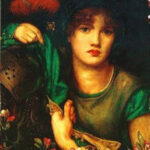The Doors, a band synonymous with the psychedelic era and the enigmatic persona of Jim Morrison, crafted a collection of songs that continue to resonate decades later. Emerging from the vibrant music scene of Los Angeles in the late 1960s, The Doors blended rock, blues, jazz, and even classical influences into a unique and intoxicating sound. This article explores 30 of their most popular and enduring songs, delving into the stories behind the music and lyrics that have captivated generations.
30. Queen of the Highway (1970)
From their fifth album, Morrison Hotel, “Queen of the Highway” is a raw and energetic rocker inspired by Jim Morrison’s tumultuous relationship with Pamela Courson. The lyrics depict a passionate but volatile romance, with Morrison casting himself as a “monster” and Courson as the titular “Queen of the Highway.” The song’s driving rhythm and Morrison’s fervent vocals capture the intensity of their bond.
29. My Eyes Have Seen You (1967)
“My Eyes Have Seen You,” from the Strange Days album, showcases The Doors’ experimental side. Recorded using eight-track technology for the first time, the song is surprisingly minimalist. Its tango-like rhythm, Robby Krieger’s concise guitar solo, and Morrison’s suggestive lyrics create a seductive and intriguing atmosphere.
28. Tightrope Ride (1971)
Following Jim Morrison’s passing, the surviving members of The Doors released three albums. “Tightrope Ride,” from Other Voices, the first post-Morrison LP, stands out as a powerful garage-rock track. Ray Manzarek takes the vocal lead, delivering a cathartic performance over a driving instrumental arrangement that keeps the band’s signature energy alive.
27. Love Street (1968)
“Love Street,” featured on Waiting for the Sun, is a departure from The Doors’ typical blues-infused rock. This baroque-pop gem highlights the band’s versatility, incorporating classical and jazz influences. Manzarek’s delicate piano and keyboard work create a dreamy, music-box-like melody, perfectly complementing Krieger’s subtle guitar and Morrison’s romantic and whimsical lyrics about a street in Laurel Canyon.
26. Waiting for the Sun (1970)
The title track of their third album, “Waiting for the Sun,” finally found its place on Morrison Hotel. The song’s journey reflects its evolution into a darker and more intense piece, mirroring the band’s changing atmosphere as the 1970s began. The buzzy, distorted sound and ominous mood capture a sense of anticipation and unease.
25. Wild Child (1969)
Recorded during the tumultuous Soft Parade sessions, “Wild Child” embodies the chaotic energy of that period. Despite internal tensions and Morrison’s legal troubles, the band produced this gritty and rebellious track. “Wild Child” serves as a bridge between 60s psychedelic rock and the emerging sounds of proto-punk and heavy metal, showcasing a raw and aggressive edge.
24. Hardwood Floor (1972)
From Full Circle, The Doors’ second post-Morrison album, “Hardwood Floor” is a straightforward, Rolling Stones-esque rocker. While the album explored diverse genres, including the Latin-infused “The Mosquito,” “Hardwood Floor” provides a more grounded rock sound, driven by Leland Sklar’s bass and the band’s classic instrumentation.
23. Tell All the People (1969)
“Tell All the People,” from The Soft Parade, caused friction within the band due to a lyric referencing guns, reportedly disliked by Morrison. This tension led to separate songwriting credits on the album. Despite the lyrical controversy, the song itself is surprisingly tranquil, featuring lush horns and gentle piano, hinting at the influences of bands like Primal Scream and Spiritualized.
22. When the Music’s Over (1967)
Closing Strange Days, “When the Music’s Over” is an epic sonic journey, demonstrating The Doors’ ability to blend structure with improvisation. Starting with a burst of energy, the song evolves through distinct musical movements, including a nod to Herbie Hancock’s “Watermelon Man” by Manzarek, creating a captivating and dynamic listening experience.
21. Summer’s Almost Gone (1968)
“Summer’s Almost Gone,” from Waiting for the Sun, perfectly captures the melancholic feeling of fleeting summer romances. Morrison’s uncharacteristically subdued vocals express a sense of loss and transience, supported by swirling keyboards, mournful piano, and subtle guitar and drum work, creating a poignant and reflective atmosphere.
20. Love Me Two Times (1967)
“Love Me Two Times,” from Strange Days, is a high-energy roadhouse blues number, notable for its frenzied harpsichord bridge and suggestive lyrics open to interpretation regarding extended pleasure. Krieger’s guitar twang and Densmore’s jazzy drumming inject vigor, while Morrison embodies a raspy storyteller, adding a playful and mischievous element.
19. I Can’t See Your Face in My Mind (1967)
Inspired by The Beatles’ Sgt. Pepper’s Lonely Hearts Club Band, “I Can’t See Your Face In My Mind,” from Strange Days, ventures into space-rock territory. This psychedelic track blends lounge jazz with mind-bending sonic textures, showcasing the album’s experimental and innovative approach.
18. Wintertime Love (1968)
“Wintertime Love,” from Waiting for the Sun, offers a more optimistic perspective compared to “Summer’s Almost Gone” from the same album. This stately waltz celebrates the warmth and comfort of finding love during the cold winter months, providing a contrasting mood of hope and affection.
17. L’America (1971)
Originally intended for Michelangelo Antonioni’s film Zabriskie Point, “L’America” was ultimately included on LA Woman. Despite being rejected by the director, the song perfectly embodies the album’s gritty and cinematic vibe. Krieger’s heavy psychedelic blues riffs and Manzarek’s unsettling keyboards create a sense of unease and intrigue, fitting for the film’s countercultural themes.
16. The Changeling (1971)
“The Changeling,” from LA Woman, The Doors’ final album with Morrison, displays a funk-rock strut reminiscent of James Brown. With session bassist Jerry Scheff contributing, the song is driven by groove and grit, showcasing a new musical direction and highlighting the band’s evolving sound in their later work.
15. The Crystal Ship (1967)
“The Crystal Ship,” from the self-titled debut album, is a delicate and bittersweet “goodbye love song,” as clarified by Densmore, written for Morrison’s soon-to-be ex-girlfriend, Mary Werbelow. The sparse arrangement, Morrison’s aching vocals, and Manzarek’s classical piano interlude create a melancholic and poignant atmosphere, conveying a sense of loss and farewell.
14. Alabama Song (The Whisky Bar) (1967)
Before David Bowie’s theatrical explorations, The Doors put their spin on “Alabama Song,” a Bertolt Brecht-Kurt Weill composition. Their rendition, from The Doors, evokes a debauched carnival with its oompah rhythms, quirky organ melody, and the unique sound of the marxophone, creating a theatrical and darkly humorous atmosphere.
13. Peace Frog (1970)
“Peace Frog,” from Morrison Hotel, combines a funky, upbeat musicality with Morrison’s characteristic lyrical juxtapositions. Drawing from his poetry and real-life experiences, including a 1967 arrest, Morrison created a song that is both energetic and thought-provoking, reflecting the band’s ability to blend contrasting elements.
12. The End (1967)
“The End,” the closing track of The Doors’ debut album, perfectly encapsulates apocalyptic dread. This nearly 12-minute epic features droning organ, tangled guitar work, and Morrison’s dramatic incantations, creating a psychedelic and unsettling atmosphere that cemented their reputation for dark and theatrical music.
11. Strange Days (1967)
The title track of Strange Days prominently features the Moog synthesizer, a then-new instrument. Its shimmering sound adds a futuristic and disoriented quality to the music, amplifying the bewildered mood of Morrison’s lyrics and enhancing the album’s overall psychedelic and experimental feel.
10. Roadhouse Blues (1970)
Opening Morrison Hotel, “Roadhouse Blues” is exactly what it promises: a gritty, blues-rooted rocker. Fueled by fiery passion and guitar virtuosity, the song features guest musicians Lonnie Mack on bass and John Sebastian (under a pseudonym) on harmonica, adding to its vibrant and authentic blues sound.
9. Hello, I Love You (1968)
“Hello, I Love You,” from Waiting for the Sun, became a massive hit, despite its chord progression being strikingly similar to The Kinks’ “All Day and All of the Night.” While the similarity is undeniable, the song’s rakish charm remains. Morrison’s vocals convey intense desire, backed by the band’s fuzzed-out and energetic performance.
8. LA Woman (1971)
The title track of LA Woman is a sprawling jazz-folk odyssey driven by buoyant piano. The Doors showcase a loose and energetic mood, with tempo shifts and accelerations underscoring Morrison’s powerful and self-referential vocal performance. The lyrics depict both the allure and darkness of Los Angeles and Morrison’s own complex mythology.
7. Moonlight Drive (1967)
“Moonlight Drive,” from Strange Days, holds a special place in The Doors’ history. It was the song Morrison sang to Manzarek at their reunion after film school, marking the birth of the band. Driven by Manzarek’s economical piano and Krieger’s free-flowing slide guitar, the song exudes a mystical blues-rock vibe, reflecting the band’s origins and early sound.
6. Soul Kitchen (1967)
“Soul Kitchen,” from The Doors, is ostensibly about a Venice Beach soul food cafe Morrison frequented. However, it can also be interpreted as a song about seeking comfort in another person’s embrace. Its enduring appeal is evident in covers by Echo and the Bunnymen and the punk band X, highlighting its broad influence.
5. Touch Me (1969)
“Touch Me,” from The Soft Parade, initially met with resistance from Krieger due to its prominent horns and strings. Despite his initial reservations, the instrumentation ultimately enhanced the song’s upbeat and dramatic feel. Morrison’s over-the-top vocal delivery, reminiscent of Elvis Presley and jazz singers, elevates the track to a powerful and memorable performance.
4. People Are Strange (1967)
“People Are Strange,” from Strange Days, is an anthem for the alienated and disenchanted. With its melancholic lyrics about feeling like an outsider, the song resonates with those experiencing loneliness and isolation. Musically, however, it is surprisingly upbeat, with theatrical arrangements that create a captivating contrast to the lyrical content.
3. Light My Fire (1967)
“Light My Fire,” from The Doors, was remarkably Krieger’s first songwriting attempt and became one of The Doors’ most iconic songs. His ambition for complex arrangements, combined with contributions from Manzarek and Morrison, resulted in a track that is both musically intricate and lyrically profound, exploring themes of love and mortality.
2. Break on Through (To the Other Side) (1967)
“Break on Through (To the Other Side),” The Doors’ debut single from The Doors, exemplifies their ability to create something original from diverse influences. While acknowledging elements borrowed from other artists, the song’s distinctive bass line and explosive energy made it a fresh and impactful introduction to the band’s unique sound.
1. Riders on the Storm (1971)
“Riders on the Storm,” from LA Woman, is considered by many to be the quintessential Doors song and marks the last recorded music by Morrison with the band. Born from a jam session inspired by “(Ghost) Riders in the Sky: A Cowboy Legend,” this gothic-tinged epic rolls in like a menacing fog. Manzarek’s Rhodes piano and Morrison’s murmured lyrics, referencing both a serial killer and personal turmoil, create a haunting and unforgettable masterpiece, solidifying its place as the top of The Doors’ popular songs.


